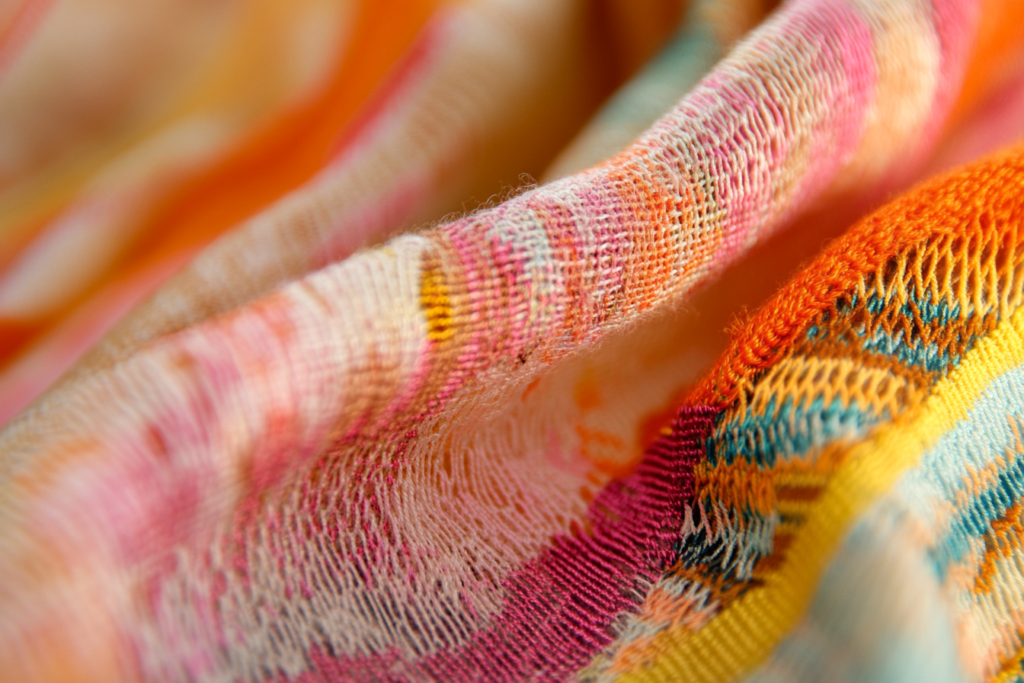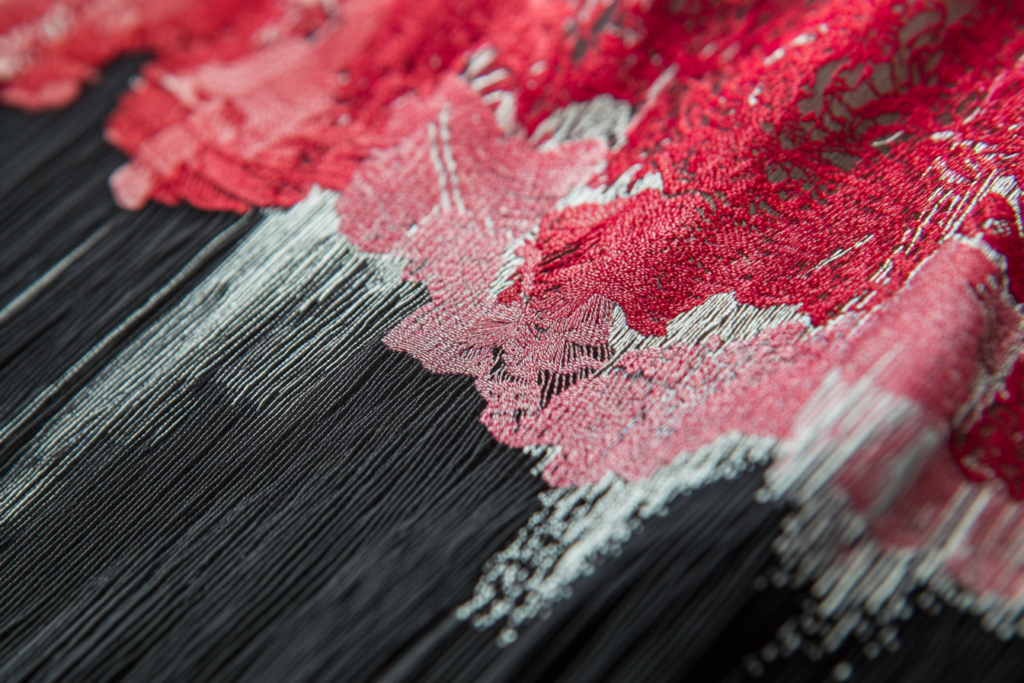Float Thread: Understanding the Unused Yarn in Jacquard Fabrics
Meta Description: A float thread in single jacquard fabric refers to unused yarn that floats along the back side of the fabric. Learn how it impacts the fabric’s texture and design.
What is Float Thread?
In the world of woven fabrics, a float thread refers to yarns in a fabric that do not form part of the woven structure and float across the surface or the back of the fabric. This phenomenon is especially noticeable in single jacquard fabrics, where the unused yarns float on the reverse side of the textile.
In jacquard weaving, the intricate patterns are created by manipulating the threads individually, allowing for highly detailed designs. Float threads are essentially unwoven threads that run parallel to the woven threads without contributing to the interlacing process. These threads are often visible on the back side of the fabric, creating a characteristic texture and effect.


How Float Threads Are Created
Float threads are a natural byproduct of the jacquard weaving process. In single jacquard fabric, the loom raises or lowers certain threads according to the desired pattern. The threads that are not involved in the weaving process are allowed to float along the back of the fabric, creating an additional layer or structure behind the woven design.
Here’s how float threads work in a typical jacquard fabric:
- Warp Threads: These are the long threads that run lengthwise across the fabric. The jacquard loom controls each individual warp thread, allowing for intricate designs to be woven.
- Weft Threads: These threads run crosswise and interlace with the warp threads to form the fabric. Some weft threads are raised, while others are left to float across the back, depending on the pattern.
- Unused Yarn: When the pattern requires certain warp or weft threads to not interlace, these unused threads “float” along the backside of the fabric.
- Backside Visibility: While float threads may not be visible from the front of the fabric, their presence can be felt and seen on the back, adding texture and a sense of depth to the fabric.
Impact of Float Threads on Fabric
- Texture and Design:
- Float threads contribute to the visual appeal and texture of the fabric, creating a tactile experience. While the front of the fabric showcases the woven design, the back side often has a softer, more textured feel due to these floating threads.
- Durability Considerations:
- Fabrics with float threads can be more delicate compared to other woven textiles. The float threads may catch or snag easily, especially if the fabric undergoes stress or abrasion.
- Fabric Thickness:
- The presence of float threads can slightly increase the thickness of the fabric. While this can add luxury and substance, it can also make the fabric less flexible or stiffer depending on the thread density.
- Pattern Visibility:
- In single jacquard fabrics, the float threads are often crucial for achieving the contrast between the raised and flat parts of the pattern. These unused yarns enhance the design’s complexity and depth, contributing to the intricate look of the fabric.
- Back Side of Fabric:
- Float threads create a unique back side to jacquard fabrics, which can sometimes be used as a design feature in certain fashion items like reversible garments or textiles where both sides are visible.
Common Uses of Float Threads in Fabrics
- Jacquard Fabrics:
- Float threads are most commonly found in jacquard fabrics, which are woven to create intricate patterns and designs. These fabrics are often used in upholstery, curtains, and high-end fashion.
- Luxury and Decorative Textiles:
- Fabrics made with float threads are often considered luxurious due to their texture and design complexity. The floating yarns create a sense of richness and depth that adds an element of elegance to home décor or fashion pieces.
- Reversible Fabrics:
- In some fabrics, float threads can be woven in such a way that both sides of the fabric are equally interesting. These reversible jacquard fabrics can showcase contrasting textures or patterns, with the floating threads contributing to the design on both sides.
- Fashion Design:
- Float threads are often used in the design of outerwear, dresses, and skirts where the back texture of the fabric is used as part of the garment’s aesthetic. Designers may use fabrics with float threads to create intricate detailing or soft, plush textures.
Advantages and Disadvantages of Float Threads
Advantages:
- Enhanced Design Complexity:
- The use of float threads allows for highly intricate designs that are not possible with standard weaving techniques. They add texture, depth, and interest to the fabric.
- Luxurious Aesthetic:
- Fabrics with float threads often have a more luxurious look and feel, making them ideal for high-end or fashion-forward garments.
- Reversible Design:
- Float threads can contribute to a fabric being reversible, which is beneficial in designing garments or textiles that can be used on both sides.
Disadvantages:
- Prone to Snagging:
- Since float threads are not woven into the fabric, they can be more easily damaged through friction or rough handling, making them more prone to snagging and wear.
- Delicate Fabric:
- Fabrics with float threads can be more delicate and may require special care, such as handwashing or dry cleaning, to maintain their integrity.
- Potential for Unevenness:
- If the float threads are not carefully managed during production, they can cause the fabric to appear uneven or inconsistent, especially when the fabric is used for patterned designs.
Conclusion: Float Threads and Their Role in Jacquard Fabrics
Float threads are a defining characteristic of single jacquard fabrics, providing a sense of texture, depth, and intricacy to the fabric’s design. While they contribute to the overall aesthetic, their delicate nature means they require careful handling. Whether used in luxurious textiles, fashion garments, or reversible designs, float threads offer a unique quality to woven fabrics that cannot be easily replicated with other techniques.



